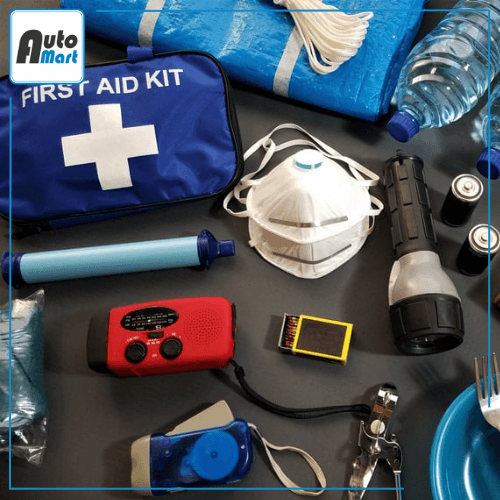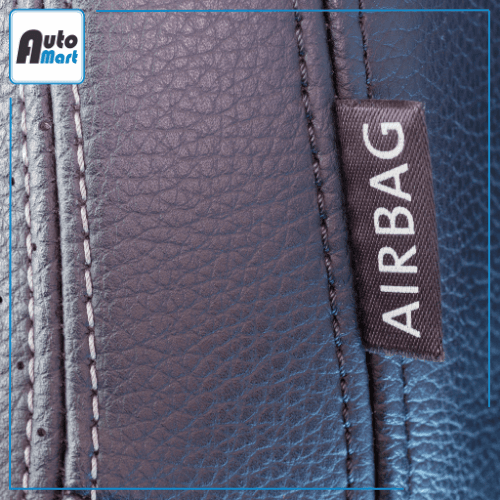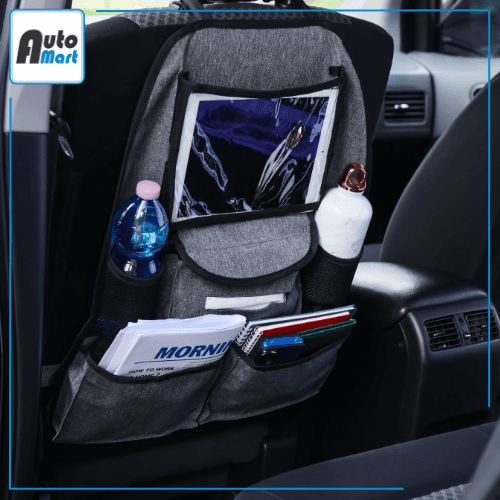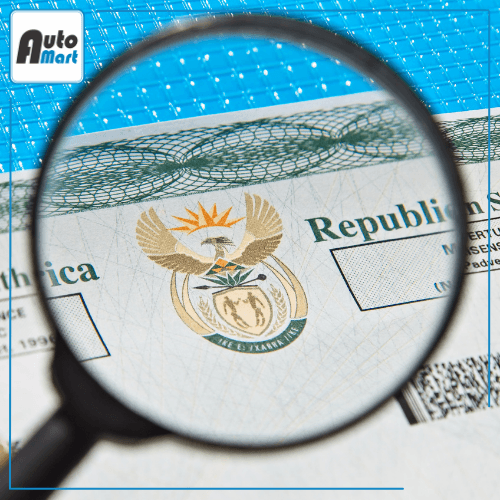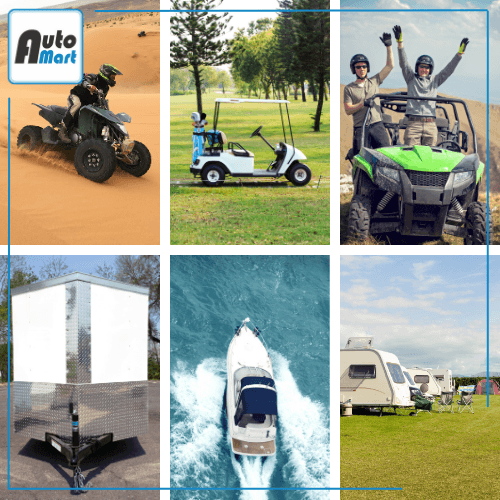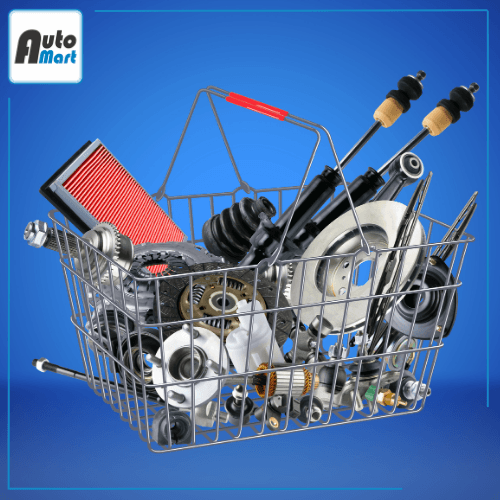Safety should always be the top priority for any driver, and part of ensuring safety is being well-prepared for unexpected situations that may arise during your journey. Whether you're embarking on a long road trip or just commuting to work, your vehicle should always be equipped with a car emergency kit tailored to meet a broad range of possible incidents and conditions. From first aid kits to jumper cables, multi-tools, and essential supplies like food and water, this guide will provide you with an exhaustive list of items to include in your car emergency kit, enhancing your readiness for the unexpected. Don’t forget to check out the Auto Mart blog for more safety tips and car maintenance advice.
1. First Aid Kit
Having a first aid kit in your car is just as important as having one at home. We spend a lot of time in our cars, and this can put us at risk for different kinds of accidents that will need quick medical care. Car accidents are common, but other possible injuries, like small cuts or burns, or even sprained ankles from an unexpected trip, show us why a first aid kit is necessary in all vehicles. A first aid kit gives you what you need to help immediately, often in very important ways, before you can get professional medical help.
 Photo credit: Mat Napo on Unsplash
Photo credit: Mat Napo on Unsplash
When might you need a first aid kit?
A first aid kit comes in handy in any situation where injury or sudden illness occurs while you're on the road. This could be minor cuts or burns from an unexpected incident, a passenger getting carsick, or even a major accident. You might also find yourself aiding another motorist or passerby in need. In all these scenarios, the ability to provide immediate care can make a big difference. In extreme cases, such as being stranded due to severe weather or a breakdown, a first aid kit can provide necessary tools for survival until help arrives.
Read: 6 ways the weather affects your car
What should be in your car first aid kit?
- A car first aid kit should be well-stocked to handle a range of medical emergencies.
- A variety of adhesive bandages for small cuts, abrasions, and blisters
- Sterile gauze pads and adhesive tape for more significant wounds
- Antiseptic wipes or creams to cleanse wounds and prevent infection
- A pair of tweezers for removing splinters or glass
- A digital thermometer
- A list of emergency phone numbers
- Scissors
- Disposable gloves
- An emergency blanket
- A basic guide to first aid
- Over-the-counter medicines for pain and common ailments, such as aspirin, ibuprofen, and an antihistamine for allergic reactions.
2. Jumper Cables
The primary reason to keep jumper cables in your car is to handle battery-related issues, particularly a dead or discharged battery. Car batteries can drain for a variety of reasons, such as leaving lights on when the car is not running, or simply due to the battery's age and condition. When a battery lacks the charge to start your car, jumper cables allow you to use another car's battery as a boost, getting your engine running again without the need for professional assistance. They are a relatively inexpensive investment that can save you from being stranded or waiting for a tow truck.
Frequently asked question about jumper cables: How do I properly use jumper cables to jump-start my car?
Here’s a simple step-by-step guide:
- Ensure both cars are turned off.
- Connect one end of the red (positive) jumper cable to the positive terminal of the dead battery.
- Connect the other end of the red (positive) cable to the positive terminal of the working battery in the other car.
- Connect one end of the black (negative) jumper cable to the negative terminal of the working battery.
- Connect the other end of the black (negative) cable to an unpainted metal part of the car with the dead battery, away from the battery itself. This acts as an earth ground.
- Start the engine of the car with the good battery.
- Try to start the engine of the car with the dead battery.
Once the car with the dead battery has been started, disconnect the jumper cables in reverse order to how you connected them.
3. Flashlight and Batteries
Having a flashlight and spare batteries in your car emergency kit is a necessity, not just a nice-to-have. This versatile tool is invaluable during low-light conditions or nighttime emergencies, serving various purposes from improving visibility when changing a tire or inspecting your engine, to signaling for help. Emergencies often occur unexpectedly, and a flashlight becomes a critical resource during these situations.
 Photo credit: WikimediaImages from Pixabay
Photo credit: WikimediaImages from Pixabay
To add to this, spare batteries ensure your flashlight is always ready, providing a reliable light source when needed. The usability of a flashlight extends to countless situations: vehicle breakdowns at night, accidents, power outages, and even instances when you're lost or stranded in remote areas. It's key for navigating your surroundings, assessing hazards, performing necessary repairs, and maintaining visibility. In these varied situations, spare batteries underscore their importance by ensuring your flashlight—a crucial tool in your car emergency kit—won't run out of power when you need it the most.
Read: The Six Most Common Car Problems You Might Face
4. Multi-tool
A multi-tool is a single compact device that combines several individual functions or tools. Common components you'll find in a multi-tool include a knife, scissors, screwdrivers, pliers, a can opener, and many more depending on the specific model. The design goal of a multi-tool is to provide a variety of functionalities in one portable, easy-to-carry device. It’s a kind of Swiss Army knife for various practical tasks, and the specific tools included can vary based on the intended use of the multi-tool.
Why you should have one in your car emergency kit
Including a multi-tool in your emergency kit is crucial because of its versatility and space-saving design. In an emergency situation, having a tool that can perform multiple functions can be invaluable. Whether you need to cut a stuck seat belt, tighten a loose screw, or open a canned good, a multi-tool can be your go-to device. It's especially handy in situations where carrying an entire toolbox would be impractical. For those unexpected roadside emergencies, a multi-tool is an efficient way to have numerous tools at your disposal without taking up a lot of space in your car. Its compact size and diverse functionality make it an essential item for any car emergency kit.
5. Roadside Flare or Reflective Triangle
Roadside flares and reflective triangles are essential safety devices used to signal distress or a warning to other road users.
A roadside flare is a type of pyrotechnic that produces a brilliant light or intense heat without an explosion. When ignited, flares can act as a high-visibility distress signal, especially useful at night or in poor light conditions. They are typically red and can burn for 15 to 60 minutes, depending on the make and model.
Reflective triangles, on the other hand, do not produce light themselves but are designed to be highly visible by reflecting the headlights of other vehicles. They are typically three-sided, stand on their own, and are usually colored fluorescent orange or red for visibility. They are meant to be placed around your vehicle to alert oncoming traffic about your presence, often used during the daytime or when flares are not available.
Read: 5 Safety Features in a Car That Are Transforming the Way We Drive
6. A Blanket and Warm/Spare Clothes for Your Car Emergency Kit
Blankets: Emergencies or car breakdowns can happen at any time, including in cold/rainy weather or at night. A blanket can help keep you warm and reduce the risk of hypothermia if you're stranded in your car during winter. Blankets can also be used in other ways, including as a cushion or makeshift pillow, a cover for broken windows, or even as a picnic blanket in non-emergency situations. Some emergency kits contain special ‘survival’ blankets made from thin, heat-reflective plastic sheeting which can help conserve body heat.
Warm or Spare Clothes: Having a spare set of clothes in your car can be a lifesaver in certain situations. If you get wet for whatever reason, you can change into dry clothes. This is especially important in colder weather, but can also provide comfort in warmer climates. If you're on a long journey and get stranded somewhere for a while, having a change of clothes can provide you with a fresh and more comfortable outfit.
7. Food and Water
Food: When you're stranded or in a situation where you don't have immediate access to emergency services or general assistance, having non-perishable, easy-to-eat food items in your car can be a lifeline. This can include energy bars, canned food, and other items that don't require cooking or special preparation. Food will provide you with essential energy and nutrients to maintain your strength, focus, and decision-making abilities, which are particularly crucial in emergency situations. It's best to choose food items that have long shelf lives, but you should still check and replace them regularly to ensure they're safe and at their best when you need them.
Water: Water is essential for life, and we can't survive without it for more than a few days. In emergencies, having a supply of drinking water in your car is essential, especially if you are stranded for a prolonged period or are in a remote location with no access to clean water. It can also be used for cleaning wounds or cooling an overheated engine in a pinch. Like food, the water in your emergency kit should be checked and replaced regularly to ensure it remains safe and fresh.
Being prepared for emergencies while on the road is an integral part of driving. Having a well-stocked car emergency kit can not only provide you with peace of mind but also potentially save lives. Whether it's a simple inconvenience like a flat tire or a serious situation such as being stranded in adverse weather, having the right tools and supplies at your disposal can make all the difference. We hope this guide has provided you with the information needed to assemble a comprehensive car emergency kit. For more safety tips and car maintenance advice, check out more helpful content on the Auto Mart blog. Stay prepared, stay safe, and enjoy your journey.
